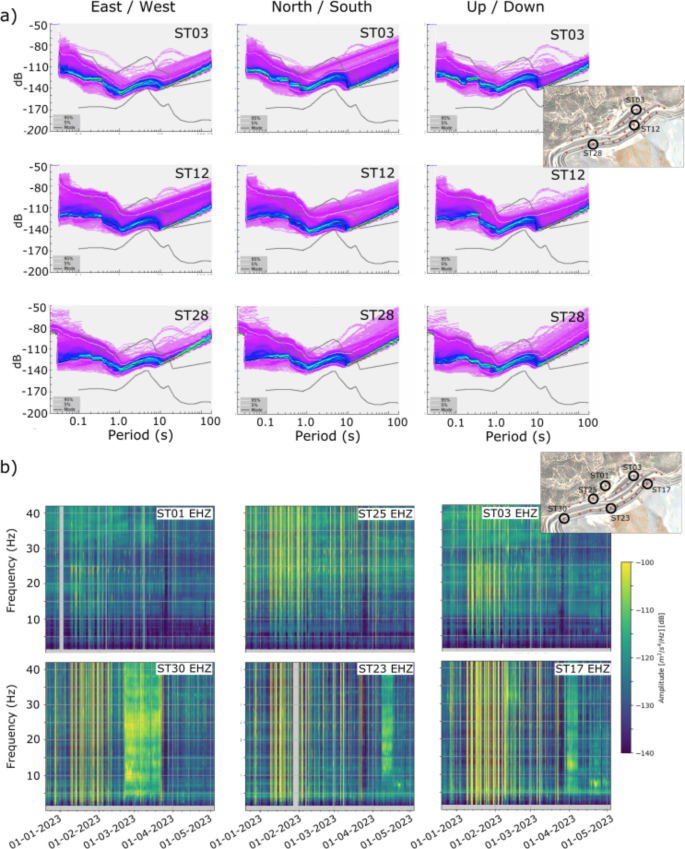Imagine a bustling open-pit mine, where the earth itself seems to sing a symphony of activity. That’s exactly what researchers have discovered by closely monitoring the seismic noise in the Riotinto mine in southern Spain. By deploying a network of seismic sensors, they were able to identify a diverse range of noise sources, from the thunderous blasts of mining operations to the subtle vibrations of water pumps and the rumble of heavy machinery. This study not only provides a detailed catalog of the noise sources in this active mining environment but also paves the way for using seismic data to enhance the safety and efficiency of mining operations. Join us as we explore the hidden rhythms of this remarkable industrial landscape.

Listening to the Heartbeat of a Mine
Mining is a complex and dynamic industry, with a myriad of activities that generate a wide range of vibrations and seismic signals. From the detonation of explosives used for rock fragmentation to the movement of heavy vehicles and machinery, the Riotinto open-pit mine is a veritable symphony of sound. By installing a dense network of seismic sensors throughout the mine, researchers were able to capture and analyze these various sources of seismic noise, shedding light on the inner workings of this industrial environment.
Cataloging the Diverse Noise Sources
The researchers were able to identify several distinct sources of seismic noise in the Riotinto mine. Among the most prominent were the blasts used for rock fragmentation, which generated short-duration, high-amplitude signals detectable several kilometers away. They also detected earthquakes, both local and distant, as well as the distinctive vibrations produced by water pumps and the movement of vehicles and heavy machinery along the dam.
Monitoring the Rhythms of Mining Activity
By analyzing the variations in seismic noise over time, the researchers were able to identify distinct phases of activity in the mine. During the first phase, the seismic noise levels were moderate, with clear day-night and weekday-weekend patterns reflecting the daily and weekly rhythms of the mining operations. The second phase, however, was characterized by a significant increase in noise levels during daytime hours, coinciding with the civil works carried out to raise the height of the tailings dam.

The third phase of the study revealed an even more interesting pattern: sustained high-noise levels at specific locations, which the researchers were able to link to the deposition of tailings into the pond. By tracking the locations of these high-noise zones, the researchers could monitor the evolution of the tailings deposition process in near real-time, providing valuable insights for the mine operators.
Enhancing Safety and Efficiency in Mining
The findings of this study have important implications for the mining industry. By cataloging the diverse sources of seismic noise and understanding their temporal patterns, the researchers have laid the groundwork for developing automated detection and classification systems that can improve the monitoring of mining activities. This, in turn, can enhance the safety of both equipment and personnel, as well as optimize the efficiency of mining operations.
Moreover, the use of seismic data can complement traditional monitoring techniques, such as Click Here
